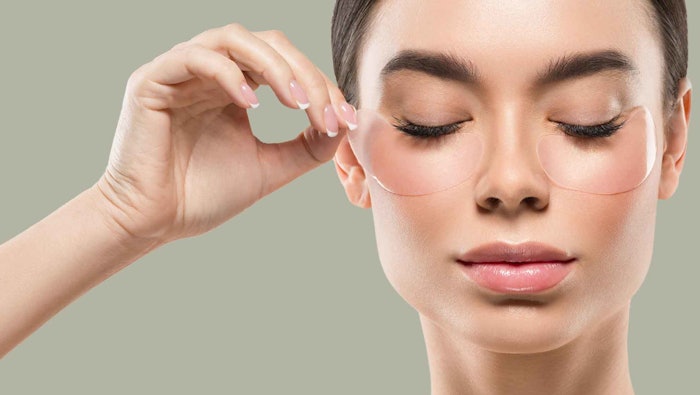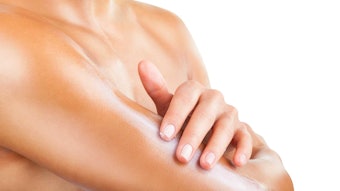
Transdermal drug delivery involves the passive diffusion of a drug into the systemic circulation via the stratum corneum. It is an appealing alternative to oral drug delivery due to better patient compliance and the avoidance of first pass metabolism. However, it is limited to active ingredients with specific physicochemical properties.1, 2
Log in to view the full article
Transdermal drug delivery involves the passive diffusion of a drug into the systemic circulation via the stratum corneum. It is an appealing alternative to oral drug delivery due to better patient compliance and the avoidance of first pass metabolism. However, it is limited to active ingredients with specific physicochemical properties.1, 2
Transdermal microneedle (MN) patches enable active ingredients to bypass the slow diffusional process across the stratum corneum’s barrier to reach directly into the deeper skin layers. MN patches are therefore suitable for the delivery of a wide range of active ingredients irrespectively of their molecular weights and other physicochemical properties.3-9
In recent years, microneedle technologies developed for the pharmaceutical industry have been adopted by the cosmetic industry for the delivery of active ingredients into the deeper skin layers.10-18 Dissolving microneedles (DMNs), for example, offer a safe and convenient option. These employ a single-use biodegradable hyaluronic acid polymer matrix loaded with encapsulated actives that temporarily puncture the skin. During the dissolution of the needles the active compounds are released into the skin via micro-channels for increased efficacy without generating biohazardous waste.
These properties have made DMNs an effective option for the delivery of cosmetic ingredients into the skin. Examples include ascorbic acid, adenosine and retinyl retinoate for wrinkle improvement; 4-n-butylresorcinol, melatonin, arbutin, niacinamide and tranexamic acid for depigmentation; plus, horse oil for skin barrier restoration and moisturization.13-18
In cosmetic preparations, DMNs vary in length, shape, composition and the number of needles per array. They typically are applied as patches, whose size and shape depend on the intended area of application and required cosmetic function. DMNs for wrinkles are larger and can contain more than 100 DMNs to cover a larger area of skin; DMNs for blemishes are small and circular to cover one pimple at a time.
DMNs can benefit blemish treatments whereas typical hydrocolloid patches are not recommended for use in the presence of anaerobic bacteria."
DMNs can benefit blemish treatments whereas typical hydrocolloid patches are not recommended for use in the presence of anaerobic bacteria. Intended for spots at the very surface, the hydrocolloid material draws out the exudate and reduces inflammation. In cases of deeper-rooted, early-formed blemishes, DMNs can deliver actives such as salicylic acid and niacinamide directly to the site of infection.
The morphology of the HA microneedles is fundamental to the efficacy of the DMN patch. The needle length must be considered, as it can affect the depth of penetration and release of the active ingredients into the skin. This, in turn, can have implications on the regulatory classification of the DMN patch.
Therefore, in this study, the authors used scanning electron microscopy (SEM) to assess changes in microneedles after their application to skin. Commercially available cosmetic patches were applied for different durations and analyzed as described next. Such results could be used for the development of patches, claims substantiation and as noted, regulatory classification.
Regulatory Note
In the United States, the Federal Food, Drug and Cosmetic Act (FD&C Act) is the primary regulation related to cosmetics. In addition, the Fair Packaging and Labeling Act (FPLA) controls compliance criteria and principles for the labeling of cosmetics and sustainability claims provided by the U.S. Food and Drug Administration (FDA).
Per the FD&C, cosmetic products are defined as “articles intended to be rubbed, poured, sprinkled or sprayed on, introduced into, or otherwise applied to the human body.”19 As such, under this regulation, a cosmetic can generate a physical but not a physiological function. Terminology and claims can determine how a product is regulated, so if the MN patch claims to treat or affect the structure of the human body, it would be classified as a drug.
Under the UK and European legislation, a cosmetic product is defined as “a substance or mixture intended to be placed in contact with the external parts of the human body (epidermis, hair system, nails, lips and external genital organs.”20 In the UK, the Medicines and Healthcare products Regulatory Agency (MHRA) classifies products on a case-by-case basis.
In the UK, hydrocolloid patches that contain no active ingredients but make medical claims related to their physical actions are usually considered medical devices."
For example, hydrocolloid patches that contain no active ingredients but make medical claims related to their physical actions (e.g., providing a protective barrier) are usually considered medical devices. Similarly, a pre-loaded/coated microneedle patch would require consideration as to whether it is intended for medical purposes; the ingredients and function of the ingredients; and whether the overall activity of the product is primarily accomplished by the patch or the delivered ingredient.
In a case where a product is not a medicinal product, medical device or cosmetic product, it would likely fall under the general product safety regulations. Therefore, in the UK, both MN and hydrocolloid patches are likely to meet the requirements of a borderline product, meaning the regulatory classification must be determined individually, considering the available information about the specific product in question.21
Regulatory distinctions such as these are important to bear in mind during the development, testing and marketing of MN-based products.
Materials and Methods
In the present work, to assess morphological changes to DMNs after their application to the skin, the authors used the following protocol.
Test patches: A pack of commercially available cosmetic DMN patches was purchased. The DMNs were prefabricated on a circular hydrocolloid patch measuring 16 mm in diameter. The adhesive ring measured 3 mm and the central array measured 10 mm, with 25 DMNs in rows of two, four and six. The material for the molded microneedles was hyaluronic acid hydrogel, which also acted as the vehicle for several low molecular weight actives.
Patch application: Self-application of the commercially available cosmetic DMN patch to healthy skin was carried out by a researcher as follows: The skin on the dorsal side of each forearm was thoroughly cleansed with a mild detergent and allowed to dry for 1 hr. A DMN patch was then applied to each forearm using thumb force. After 30 min, one DMN patch was detached from the skin and examined using scanning electron microscopy (SEM) as described next. The remaining DMN patch was detached from the skin and examined at 120 min.
Scanning electron microscopy: SEM was used to assess the morphology of the DMN patches at different time intervals: t = 0, t = 30 min and t = 120 min, focusing on their length and tip geometry. To carry out the assessment, a 25-mm carbon tab was adhered to a 25-mm aluminium disk. Each DMN patch was then placed on the carbon tab and a thin layer of gold and palladium (Au/Pd) was applied for 108 sec at 30-40 mA/mbar in the sputter coater, forming a thickness of 5-10 nm. Once coated, the aluminium disk was placed under the SEM and a vacuum pressure of > 1 Pa was created. An accelerating voltage was applied and the filament saturation was increased to ~50 mA. SEM images of the needles at different angles and magnifications (25x - 300x) were subsequently recorded.
Results and Discussion
Before application to the skin, the microneedle surface was smooth and formed an irregular cone-shaped base and cylindrical tip. Viewed from above, the array appeared to have hollow needles with a small opening at the apex, as shown in Figures 1a-c; however, a side view shows that the needles were not hollow and had a blunt tip (see Figure 1f).
 Figure 1. Microneedle scans at t = 0; microneedle array (a); single DMN from above (b); single DMN tip (c); side view of the single DMN (d); side view of the microneedle array (e); and side view of the single DMN tip (f)
Figure 1. Microneedle scans at t = 0; microneedle array (a); single DMN from above (b); single DMN tip (c); side view of the single DMN (d); side view of the microneedle array (e); and side view of the single DMN tip (f)
The height of the microneedles was also inspected both before application (t = 0 min; see Figure 2a, 2d, 2f), and after 30 min (see Figure 2b, 2e) and 2 hr (see Figure 2c) of skin penetration.
The average length of the DMN before insertion was 513.2 ± 27.4 μm (n = 5), as shown in Figure 2d. Considering that the total thickness of the epidermis on the dorsal forearm is approximately 75 μm,22 we can deduce that the microneedles reached well into the dermis. Piercing through the dermis could cause slight discomfort due to the presence of nerves. It would also enable the prompt uptake of the active ingredients into the systemic circulation. This should be considered during the regulatory classification of the DMN patch.
 Figure 2. Changes to microneedles at different time points; before application (a), upon thumb force after 30 min (b) and after 120 min (c); height measurements of DMN needles initially (d) and after 30 min; and circular DMN array with adhesive border (f)
Figure 2. Changes to microneedles at different time points; before application (a), upon thumb force after 30 min (b) and after 120 min (c); height measurements of DMN needles initially (d) and after 30 min; and circular DMN array with adhesive border (f)
After 30 min, the length of the microneedles measured 382 ± 56.1 μm (see Figure 2e) and after 120 min (see Figure 2c) the microneedles had fully dissolved. Therefore, the microneedles fully perforated the skin, dissolved and released the active ingredients within 2 hr.
It can be observed that after 30 min, the base of all needles remained intact but the tips showed less stability, curving inwards (see Figure 2b and Figure 3). However, some were shown to have complete tip loss. Additionally, some needles on the perimeter had noticeably more degradation, with the tip of the needle completely dissolved.
 Figure 3. Morphological changes of a single DMN needle tip after 30 min application to the skin
Figure 3. Morphological changes of a single DMN needle tip after 30 min application to the skin
Conclusion
This study of the morphological changes of DMN cosmetic patches revealed that the needles were completely dissolved within 2 hr after application. The SEM technique described could therefore provide useful insight about the structural changes of the microneedles at the quality control and/or claim substantiation stages of the DMN patches’ development.
References
1. Pastore, M.N., Kalia, Y.N., Horstmann, M. and Roberts, M.S. (2015). Transdermal patches: History, development and pharmacology. Br J Pharmacol 172, 2179-2209.
2. Barry, B.W. (2001). Novel mechanisms and devices to enable successful transdermal drug delivery. Eur J Pharm Sci 14, 101-114.
3. Jung, J.H. and Jin, S.G. (2021). Microneedle for transdermal drug delivery: Current trends and fabrication. J. Pharm. Investig. 51, 503-517.
4. Prausnitz, M.R. (2017). Engineering microneedle patches for vaccination and drug delivery to skin. Annual Review of Chemical and Biomolecular Engineering. 8(1) 177-200.
5. Dangol, M., Yang, H., Li, C.G., Lahiji, S.F., Kim, S., Ma, Y. and Jung, H. (2016). Innovative polymeric system (IPS) for solvent-free lipophilic drug transdermal delivery via dissolving microneedles. Journal of Controlled Release. 223, 118-125.
6. He, J., Zhang, Z., Zheng, X., Li, L., Qi, J., Wu, W. and Lu, Y. (2021). Design and evaluation of dissolving microneedles for enhanced dermal delivery of propranolol hydrochloride. Pharmaceutics. 13, 579.
7. He, M., Yang, G., Zhang, S., Zhao, X. and Gao, Y. (2018). Dissolving microneedles loaded with Etonogestrel microcrystal particles for intradermal sustained delivery. JPharmSci. 107, 1037-1045.
8. Henry, S., McAllister, D.V., Allen, M.G. and Prausnitz, M.R. (1998). Microfabricated microneedles: A novel approach to transdermal drug delivery. Journal of Pharmaceutical Sciences. 87, 922-925.
9. Ita, K. (2015). Transdermal delivery of drugs with microneedles - potential and challenges. Pharmaceutics 7, 90-105.
10. Zvezdin, V., Peno‐Mazzarino, L., Radionov, N., Kasatkina, T. and Kasatkin, I. (2020). Microneedle patch based on dissolving, detachable microneedle technology for improved skin quality – Part 1: Ex vivo safety evaluation. International Journal of Cosmetic Science. 42(4) 369-76.
11. Park, K.Y., Kwon, H.J., ... Kim, M.N., et al. (2017). Efficacy and safety of a new microneedle patch for skin brightening: A randomized, split-face, single-blind study. Journal of Cosmetic Dermatology. 16(3) 382-7.
12. Kim, S., Yang, H., ... An, S.M., et al. (2015). 4-N-butylresorcinol dissolving microneedle patch for skin depigmentation: A randomized, double-blind, placebo-controlled trial. Journal of Cosmetic Dermatology. 15(1) 16-23.
13. Kim, M., Yang, H., Kim, H., Jung, H. and Jung, H. (2014). Novel cosmetic patches for wrinkle improvement: Retinyl retinoate- and ascorbic acid-loaded dissolving microneedles. International Journal of Cosmetic Science. 36(3) 207-12.
14. Lee, C., Eom, Y.A., ... Park, Y.O., et al. (2018). Skin barrier restoration and moisturization using horse oil-loaded dissolving microneedle patches. Skin Pharmacology and Physiology. 31(3) 163-71.
15. Lee, C., Yang, H., Kim, S., Kim, M., Kang, H., Kim, N., An, S., Koh, J. and Jung, H. (2016). Evaluation of the anti-wrinkle effect of an ascorbic acid-loaded dissolving microneedle patch via a double-blind, placebo-controlled clinical study. International Journal of Cosmetic Science. 38, 375-381.
16. Lee, Y., Eun, Y., Lee, J., Cheon, M., Park, Y. and Cho, B. (2013). Effects of topical application of growth factors followed by microneedle therapy in women with female pattern hair loss: A pilot study. J Dermatol 1, 81-3.
17. Kang, G., Tu, T.N.T., ... Jung, H., et a. (2018). Adenosine-loaded dissolving microneedle patches to improve skin wrinkles, dermal density, elasticity and hydration. International Journal of Cosmetic Science. 40, 199-206.
18. Yang, H., Kim, S., ... Jung, H., et al. (2019). Two-phase delivery using a horse oil and adenosine-loaded dissolving microneedle patch for skin barrier restoration, moisturization and wrinkle improvement. Journal of Cosmetic Dermatology. 18, 936-943.
19. U.S. Food and Drug Administration. (Accessed 2023, Aug 8). Cosmetics and U.S. law. Available at: https://www.fda.gov/cosmetics/cosmetics-laws-regulations/cosmetics-us-law
20. The National Archives (Accessed 2023, Aug 8). Regulation (EC) No. 1223/2009 of the European Parliament and of the Council of 30 November 2009 on cosmetic products. Available at: https://www.legislation.gov.uk/eur/2009/1223/article/2
21. Gov.UK. (Accessed 2023, Aug 21). Borderline products: How to tell if your product is a medicine. Available at: https://www.gov.uk/guidance/borderline-products-how-to-tell-if-your-product-is-a-medicine
22. Sandby-Møller, J., Poulsen, T. and Wulf, H.C. (2003). Epidermal thickness at different body sites: Relationship to age, gender, pigmentation, blood content, skin type and smoking habits. Acta Derm Venereol. 83(6) 410-3.










